How Many Trading Accounts Do You Need?
In this session, we will find out how many trading accounts are ideal for you.
Some of you might be thinking: “I have a Zerodha account from where I do all my buying and selling. Why would I ever need another account?”. I think that this is a fundamental mistake that a lot of traders make and as a result struggle to be profitable.
You need to strategically think about this. I am going to share some insights about this that are not taught in any books and it comes from experience.
First thing first, ask yourself: “Am I an investor or trader or both?”. If you don’t know the difference between the two, you must watch the video on our channel, VRD Nation. Depending on who you are, your needs for trading accounts will be different.
Let’s start with investing
Investors have long term investment goals. They invest in fundamentally strong companies with the vision of holding those shares for 5-10 or even 20 years.
They are not bothered by the short-term fluctuations in the stock prices. So, the biggest strength of a good investor is patience. Just let the market do what it is doing – as long as the fundamentals of the company are intact, you don’t have any reason to fear.
What you don’t want is to be that kind of investor who logs into his account every week or even daily and checks how your portfolio is doing. What good will that do for you?
What happens is that when people use the same account for trading and investing is they invariably check their portfolios almost daily and that triggers short term reactions. If a stock went up 10%, there is a temptation to sell and book profits. When a stock is down 5%, fear starts creeping in their minds.
That is why I recommend having a separate, dedicated trading account for investing- where you only buy shares for long term investment. Further, make it a rule to not log into that account more than once or twice a month unless there is a clear reason.
Now let’s talk about trading
In trading, you can be an intraday trader, a swing trader or a positional trader.
We’ll start with intraday trading which is the trickiest of all.
The one golden rule in intraday trading is to never take delivery of the trade. What happens is that when an intraday trade goes wrong some traders think “If I square off my trade, I will have to take the losses…instead, what I can do is to take the delivery …may be the next day the stock or the index will bounce back”.
I can not tell you how much money I have lost making this stupid mistake early in my trading career. You never, ever, take delivery of a bad trade because the chances are the trade that did not work today will not work out tomorrow either.
So, I have made it a rule: irrespective of what profits or losses I am sitting on, I square of all my positions and at the end of the day, my net holding is zero.
Therefore, you must have a dedicated trading account for intraday trading. In this account, you have to face the truth every day. This account is your mirror of how good of a trader were you that day and the truth has to be dealt with every day.
Now, for swing and positional trading, you should have a separate account. Not just a separate account but this account should be with a different broker than your intraday trading account.
Let me explain why.
This account will serve two purposes: first is obviously, you take Swing and Positional trades through this account and second, which is very important is it will act as your backup trading account for intraday trading.
What is a backup trading account? Well, if you are an intraday trader and are in the middle of a trade when suddenly, the broker’s platform goes down. You are desperately trying to refresh the screen, call their call centres but nothing seems to be working. To make matters worse, the trade starts going against you.
Instead of feeling helpless and cursing your broker, what you can do is create a hedge position in this backup account. What does it mean? Well, let’s say you bought 1000 shares of Reliance industries and that trade started turning into a loss. You try to exit the trade but your broker’s servers are down.
What you can do is to short 1000 shares Reliance from your swing trading account till your first account is back up. During this time even if Reliance falls 2%, 3% or 10%, you have nothing to worry about because even though your original trade is in a loss, your hedge trade is in profits. When the system comes back to normal, just square off both trades and you’re good.
So far, we have seen that a dedicated account for investing, a dedicated one for intraday and one for swing/positional traders (which also acts as a backup account).
Now, every once in a while, people ask me about a fourth account: where they can play around, take their impulses, your frustrations out.
See, my philosophy is this: if you have a drug addiction, what should you do: fix a time that you will only take drugs on the weekends so that the rest of the week you are sober? No, right.
You go to a professional doctor and get yourself treated because it will go out of control very soon. Similarly, if you don’t have emotional control, you are impulsive or addicted to trading, then don’t increase that dependence with another account. Work on your emotional control and get guidance from whoever you trust but please for heaven’s sake don’t legitimize it with a dedicated trading account.
Conclusion
For investing, one dedicated account where you do not log in more than once or twice a month. For intraday, another dedicated account where you do not take any delivery – come hell or high water. It is your zero-balance account. And another account that you can use for swing and positional trading, which also acts as a backup account for your intraday account.
So, you pick and choose. If you are just an investor, you just need one account.
If you are an investor and occasional swing trader, you need two accounts and if you do all three as I do, you need three accounts.
I hope you learned something new today. If you have any questions about what we covered in this session, feel free to leave comments below and we’ll try to answer them.
Howdy!
If you’re here for the first time, let’s get introduced.
VRD Nation is India’s premier stock market training institute and we (Team VRD Nation) are passionate about teaching each and every aspect of investing and trading.
If you’re here for the first time, don’t forget to check out “Free Training” section where we have tons of free videos and articles to kick start your stock market journey.
Also, we got two awesome YouTube channels where you can continue the learning process.
Must-Read Articles
How Many Trading Accounts Do You Need?
In this session, we will find out how many trading accounts are ideal for you.
Some of you might be thinking: “I have a Zerodha account from where I do all my buying and selling. Why would I ever need another account?”. I think that this is a fundamental mistake that a lot of traders make and as a result struggle to be profitable.
You need to strategically think about this. I am going to share some insights about this that are not taught in any books and it comes from experience.
First thing first, ask yourself: “Am I an investor or trader or both?”. If you don’t know the difference between the two, you must watch the video on our channel, VRD Nation. Depending on who you are, your needs for trading accounts will be different.
Let’s start with investing
Investors have long term investment goals. They invest in fundamentally strong companies with the vision of holding those shares for 5-10 or even 20 years.
They are not bothered by the short-term fluctuations in the stock prices. So, the biggest strength of a good investor is patience. Just let the market do what it is doing – as long as the fundamentals of the company are intact, you don’t have any reason to fear.
What you don’t want is to be that kind of investor who logs into his account every week or even daily and checks how your portfolio is doing. What good will that do for you?
What happens is that when people use the same account for trading and investing is they invariably check their portfolios almost daily and that triggers short term reactions. If a stock went up 10%, there is a temptation to sell and book profits. When a stock is down 5%, fear starts creeping in their minds.
That is why I recommend having a separate, dedicated trading account for investing- where you only buy shares for long term investment. Further, make it a rule to not log into that account more than once or twice a month unless there is a clear reason.
Now let’s talk about trading
In trading, you can be an intraday trader, a swing trader or a positional trader.
We’ll start with intraday trading which is the trickiest of all.
The one golden rule in intraday trading is to never take delivery of the trade. What happens is that when an intraday trade goes wrong some traders think “If I square off my trade, I will have to take the losses…instead, what I can do is to take the delivery …may be the next day the stock or the index will bounce back”.
I can not tell you how much money I have lost making this stupid mistake early in my trading career. You never, ever, take delivery of a bad trade because the chances are the trade that did not work today will not work out tomorrow either.
So, I have made it a rule: irrespective of what profits or losses I am sitting on, I square of all my positions and at the end of the day, my net holding is zero.
Therefore, you must have a dedicated trading account for intraday trading. In this account, you have to face the truth every day. This account is your mirror of how good of a trader were you that day and the truth has to be dealt with every day.
Now, for swing and positional trading, you should have a separate account. Not just a separate account but this account should be with a different broker than your intraday trading account.
Let me explain why.
This account will serve two purposes: first is obviously, you take Swing and Positional trades through this account and second, which is very important is it will act as your backup trading account for intraday trading.
What is a backup trading account? Well, if you are an intraday trader and are in the middle of a trade when suddenly, the broker’s platform goes down. You are desperately trying to refresh the screen, call their call centres but nothing seems to be working. To make matters worse, the trade starts going against you.
Instead of feeling helpless and cursing your broker, what you can do is create a hedge position in this backup account. What does it mean? Well, let’s say you bought 1000 shares of Reliance industries and that trade started turning into a loss. You try to exit the trade but your broker’s servers are down.
What you can do is to short 1000 shares Reliance from your swing trading account till your first account is back up. During this time even if Reliance falls 2%, 3% or 10%, you have nothing to worry about because even though your original trade is in a loss, your hedge trade is in profits. When the system comes back to normal, just square off both trades and you’re good.
So far, we have seen that a dedicated account for investing, a dedicated one for intraday and one for swing/positional traders (which also acts as a backup account).
Now, every once in a while, people ask me about a fourth account: where they can play around, take their impulses, your frustrations out.
See, my philosophy is this: if you have a drug addiction, what should you do: fix a time that you will only take drugs on the weekends so that the rest of the week you are sober? No, right.
You go to a professional doctor and get yourself treated because it will go out of control very soon. Similarly, if you don’t have emotional control, you are impulsive or addicted to trading, then don’t increase that dependence with another account. Work on your emotional control and get guidance from whoever you trust but please for heaven’s sake don’t legitimize it with a dedicated trading account.
Conclusion
For investing, one dedicated account where you do not log in more than once or twice a month. For intraday, another dedicated account where you do not take any delivery – come hell or high water. It is your zero-balance account. And another account that you can use for swing and positional trading, which also acts as a backup account for your intraday account.
So, you pick and choose. If you are just an investor, you just need one account.
If you are an investor and occasional swing trader, you need two accounts and if you do all three as I do, you need three accounts.
I hope you learned something new today. If you have any questions about what we covered in this session, feel free to leave comments below and we’ll try to answer them.




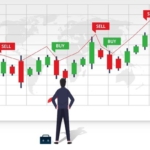





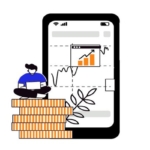



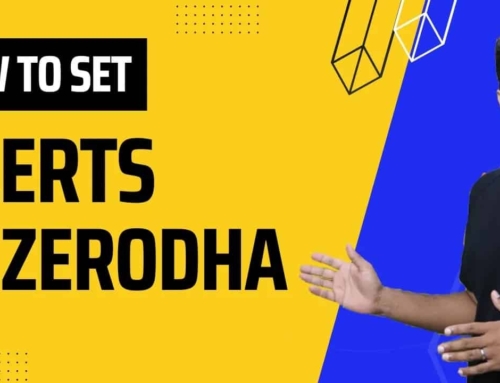
![What is Virtual Contract Note [Zerodha]](https://www.vrdnation.com/wp-content/uploads/2023/10/maxresdefault-virtual-note-500x383.jpg)
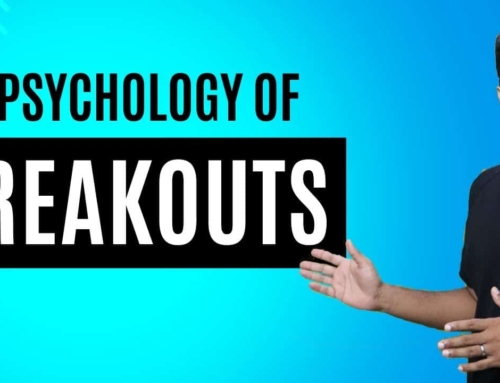
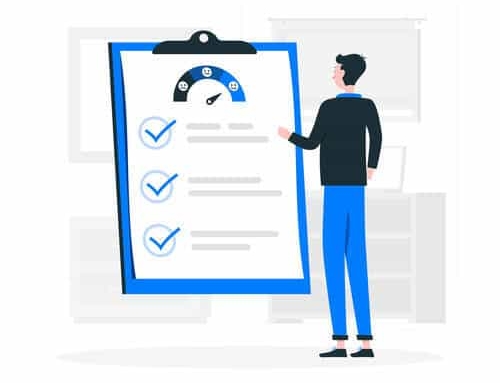

Leave A Comment